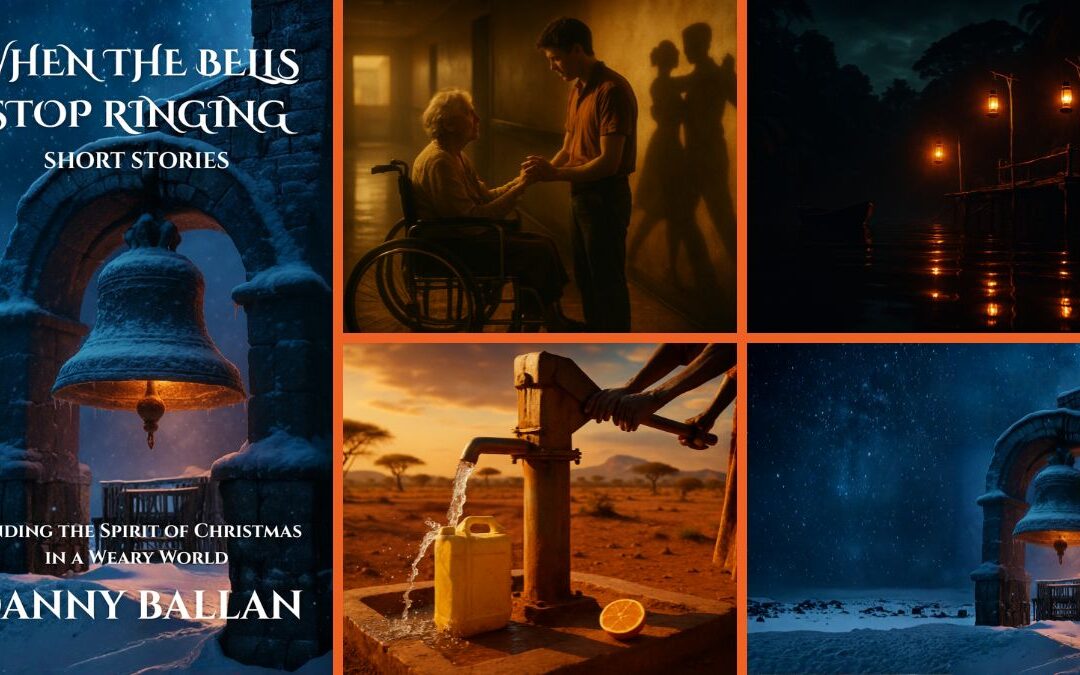For years, we’ve been dutiful students of our own flawed minds. We’ve learned to spot individual cognitive biases in the wild: the flash of Confirmation Bias in a political argument, the sting of the Sunk Cost Fallacy in a failing project, the whisper of the Availability Heuristic in our irrational fears. We have neatly categorized these mental glitches, studying them like distinct species in a psychological zoo. We’ve learned their names, their habits, and their habitats.
But this tidy, specimen-in-a-jar approach has a profound limitation. It misses the most important and dangerous truth about cognitive biases: they rarely hunt alone. In the complex ecosystem of the human mind, biases interact. They feed on each other. They combine, amplify, and compound one another, creating powerful chain reactions of flawed thinking. This is the phenomenon of a cognitive cascade: a sequence of self-reinforcing biases that can send an individual, a team, or even a nation tumbling toward a disastrous outcome.
Understanding these cascades is the advanced class in the study of human irrationality. It’s about moving from identifying individual missteps to diagnosing systemic patterns of failure. It’s about seeing how a seemingly minor initial bias can trigger an avalanche of poor judgment. To truly grasp the architecture of human folly, we must deconstruct one of these catastrophic chain reactions and see how, piece by piece, our own minds can build a prison of self-deception.
The Anatomy of a Cascade: How Biases Recruit Their Friends
Before we dive into a real-world disaster, let’s map out how these chain reactions typically work. Cognitive cascades are not random; they follow a grimly predictable logic.
Imagine a simple decision. The first bias to strike is often the Anchoring Bias. An initial piece of information—a preliminary sales forecast, an early diagnosis, a first offer in a negotiation—latches onto our brain. This anchor may be arbitrary or wildly inaccurate, but it sets the terms for everything that follows.
Once the anchor is set, Confirmation Bias immediately reports for duty. Our brain, now committed to the initial anchor, begins to actively seek out evidence that supports it and to ignore or discredit any information that contradicts it. It’s like the anchor has given our brain its marching orders, and Confirmation Bias is the loyal soldier carrying them out.
As we continue to find this self-affirming evidence, we can fall prey to the Dunning-Kruger Effect, a cognitive bias whereby people with low ability at a task overestimate their ability. Our early, biased success in “confirming” our initial belief can create a potent illusion of expertise. We become overconfident, not just in our conclusion, but in our own intellectual prowess.
And the master bias that allows this whole toxic brew to fester is the Bias Blind Spot: our pervasive tendency to recognize the impact of biases in others, while failing to see it in ourselves. We see our colleagues as biased, our competitors as irrational, but we believe our own conclusions are the product of sound, objective analysis. This blind spot is the ultimate enabler, the forcefield that protects the entire cascade from scrutiny.
This sequence—Anchor, Confirm, Overconfidence, Blindness—is a recipe for disaster. Let’s see how it played out in one of the most infamous business blunders of the modern era.
Case Study in Calamity: The New Coke Fiasco
In the spring of 1985, the Coca-Cola Company made a decision that would become a legendary cautionary tale. After nearly a century of unparalleled success, they announced they were changing the sacred formula of their flagship product. They were killing off original Coke and replacing it with a new, sweeter version, dubbed “New Coke.” The American public’s reaction was not just negative; it was swift, visceral, and volcanic. The company was inundated with furious phone calls and protest letters. After just 79 days of market mayhem, the executives, thoroughly humbled, announced the return of the original formula, rebranded as “Coca-Cola Classic.”
How did a company full of the brightest marketing minds on the planet make such a colossal miscalculation? It wasn’t a single error. It was a classic cognitive cascade.
The First Domino: The Anchor of the “Pepsi Challenge”
The story of New Coke begins with a powerful anchor: Pepsi’s aggressive “Pepsi Challenge” ad campaign in the late 1970s and early 80s. In these televised blind taste tests, consumers were asked to take a sip of Coke and a sip of Pepsi and choose which they preferred. A significant number of people chose Pepsi.
For the executives at Coca-Cola, this was more than a marketing gimmick; it was an existential threat. The data from these taste tests became a powerful Anchor. It created a single, overriding narrative within the company: “Our product is inferior in taste.” This anchor narrowed their vision, making “the taste problem” the only problem that seemed to matter. They were no longer the dominant market leader with an iconic brand; they were the company with the less-preferred product.
The Reinforcement Engine: Confirmation Bias Takes Over
Once this anchor was set, the machinery of Confirmation Bias whirred to life. The company embarked on a massive research project, codenamed “Project Kansas,” to develop and test a new formula. They conducted nearly 200,000 blind taste tests of their own. And in these tests, their new, sweeter formula consistently beat both original Coke and Pepsi.
This data seemed like irrefutable proof. But it was deeply flawed, and Confirmation Bias made them blind to its flaws. The “sip test” itself is biased. In a single sip, people tend to prefer a sweeter product. That preference doesn’t necessarily hold up over the course of drinking an entire can. More importantly, the tests were blind. They completely removed the most crucial element of the product: the brand. They were testing a beverage, but what they were selling was an idea, a memory, a piece of American identity.
Any evidence that contradicted the “taste is everything” theory was dismissed. When some taste testers were told they were drinking a replacement for Coke, a significant minority (around 10-12%) reacted with anger and hostility. They said it was a terrible idea that shouldn’t be pursued. But the executives, already convinced by the mountain of “positive” taste test data, dismissed these people as outliers, as cranks who were resistant to change. They found the evidence they were looking for, and the evidence they weren’t looking for was explained away.
The Summit of Stupidity: The Dunning-Kruger Effect and Executive Overconfidence
The executives at Coca-Cola were not stupid men. They were masters of their industry. However, their very expertise may have led to a form of the Dunning-Kruger Effect. They were so confident in their marketing prowess and their data-driven approach that they couldn’t see the limits of their own knowledge. They believed they had reduced the complex, emotional connection people had with Coke to a simple, solvable variable: sweetness.
Their success in “proving” their hypothesis with the taste test data likely gave them a profound sense of confidence and intellectual certainty. They believed they had cracked the code, that they were making a bold, rational, and data-backed decision. This overconfidence in their own methodology prevented them from asking the right questions. They didn’t ask, “What is the emotional risk of changing something people see as part of their identity?” They only asked, “Which liquid do people prefer in a one-sip test?” They were experts in marketing beverages, but they were novices in the cultural psychology of a brand, and they were too confident to realize it.
The Forcefield: The Bias Blind Spot and Groupthink
Throughout this entire process, you can be sure that the Coca-Cola executives saw themselves as the rational actors in the marketplace. They would have looked at Pepsi’s marketing as gimmicky. They would have seen their own process as rigorous and scientific. This is the Bias Blind Spot in action, preventing any real introspection.
Furthermore, this cascade likely took place within a culture of Groupthink. The “taste problem” became the accepted truth. The momentum behind “Project Kansas” would have been immense. In the boardroom, it would have been incredibly difficult for a lone dissenter to stand up and say, “Wait a minute, are we sure this mountain of data isn’t leading us off a cliff? Are we forgetting that we’re not just selling sugar water?” Voicing such a doubt would have been seen as questioning the entire, multi-million dollar project and the wisdom of the group. It was easier, and safer, to go along with the burgeoning consensus. The cascade was protected by an invisible forcefield of self-assurance.
Deconstructing the Disaster and Defusing the Cascade
The New Coke story is a perfect storm of cognitive failure. The Pepsi Challenge provided the Anchor. Confirmation Bias filtered the data to support it. The Dunning-Kruger Effect created overconfidence in a flawed methodology. And the Bias Blind Spot and Groupthink prevented anyone from sounding the alarm until it was too late.
So how do we prevent these cascades in our own lives and organizations?
Antidotes to a Chain Reaction
- Question the Anchor: The first step is always to attack the problem at its source. Before you accept any initial piece of information as the foundation for a decision, scrutinize it. Where did this number come from? Is this the only way to frame the problem? Actively try to re-anchor the conversation by generating alternative starting points and problem definitions.
- Assign a “Pre-Mortem” Team: To fight Confirmation Bias and Groupthink, institutionalize pessimism. Before a final decision is made, create a “pre-mortem” team whose only job is to assume the project has failed spectacularly. They must work backward to create a plausible story of how that failure happened. This exercise forces a team to look for disconfirming evidence and consider the risks they’ve been ignoring.
- Cultivate Intellectual Humility: The ultimate antidote to the Dunning-Kruger Effect and the Bias Blind Spot is intellectual humility. This is the simple, yet profound, recognition that you might be wrong. It’s about creating a culture where asking “What if we’re missing something?” or “What’s the strongest argument against our position?” is seen not as a sign of weakness, but as a sign of strength and rigor.
Our minds are not designed for perfect rationality. They are designed to take shortcuts, to build narratives, and to protect our sense of certainty. In our complex modern world, these tendencies can combine in dangerous and destructive ways. But by understanding the mechanics of these cognitive cascades, we can learn to install our own circuit breakers. We can learn to be suspicious of our initial certainty, to actively hunt for our own blind spots, and to approach complex decisions with the caution and humility they deserve.
MagTalk Discussion
Focus on Language
Vocabulary and Speaking
Alright, let’s zoom in and dissect some of the language from that article. When you’re trying to explain a complex chain reaction of ideas, every word counts. The right vocabulary can make an abstract concept feel clear, concrete, and memorable. Let’s explore ten of the key words and phrases we used, and talk about how you can wield them in your own conversations.
We’ll start with specimen. We talked about studying biases like a “specimen-in-a-jar.” A specimen is an individual animal, plant, piece of a mineral, etc., used as an example of its species or type for scientific study or display. Think of the butterflies pinned in a box at a museum—each one is a specimen. Using this metaphor paints a picture of a very tidy, sterile, and isolated way of looking at biases, which we then contrasted with the messy reality. It’s a great word to use when you want to describe a single, perfect example of something that is being studied out of its natural context.
Next, let’s look at folly. We said that to understand human “folly,” we must deconstruct these cascades. Folly is a wonderful and slightly old-fashioned word for a lack of good sense; foolishness. It’s not just a simple mistake; it’s a foolishness that often has a grand or tragic quality to it. Building a mansion made of ice in the desert would be an act of folly. The word carries a sense of calamitous, almost epic, foolishness, which makes it perfect for describing the kind of large-scale, self-inflicted disasters caused by cognitive biases.
Here’s a fantastic adjective: arbitrary. We mentioned that an anchor can be “arbitrary or wildly inaccurate.” Arbitrary means based on random choice or personal whim, rather than any reason or system. An arbitrary decision is one made for no good reason. A dictator might make arbitrary rules. The division of a cake among children can sometimes seem arbitrary. It’s a crucial concept because it highlights that the anchors that guide our thinking often have no logical foundation whatsoever.
Let’s talk about prowess. We said the Dunning-Kruger effect can give us an illusion of our own intellectual “prowess.” Prowess means skill or expertise in a particular activity or field. It’s a strong, impressive word. You can talk about a soldier’s prowess in battle, a lawyer’s prowess in the courtroom, or an athlete’s physical prowess. It suggests a high level of mastery and ability. Using it in the context of the Dunning-Kruger effect creates a powerful irony—we have a deluded belief in our own expert skill.
Then we have the word inundated. In the New Coke story, we said the company was “inundated with furious phone calls.” To inundate someone is to overwhelm them with things or people to be dealt with. It literally means to flood. You might be inundated with emails after a vacation, or a small shop might be inundated with customers during a big sale. It’s a very strong verb that paints a picture of being completely swamped and unable to cope with the sheer volume of something.
Let’s look at visceral. We described the public’s reaction as “swift, visceral, and volcanic.” We’ve seen this one before, and it’s so useful it’s worth revisiting. Visceral means relating to deep, inward feelings rather than the intellect. A visceral reaction is a gut reaction—it’s deep, instinctive, and not based on logic. The negative reaction to New Coke wasn’t a reasoned critique of its flavor profile; it was a deep, gut-level feeling of betrayal.
Here’s another great one: irrefutable. We said the taste test data seemed like “irrefutable proof.” If something is irrefutable, it is impossible to deny or disprove. Irrefutable evidence in a court case guarantees a conviction. It’s an absolute word. It means the proof is so strong that no argument can stand against it. By describing the data as seeming irrefutable, we highlight the illusion of certainty that the executives were under.
Next up, outliers. The executives dismissed the angry customers as “outliers.” In statistics, an outlier is a data point that differs significantly from other observations. It’s an anomaly, an exception to the rule. In common language, we use it to describe a person or thing that is different from all other members of a particular group. By labeling the dissenters as outliers, the executives were able to psychologically dismiss their opinions as statistically insignificant noise rather than as a valid and important warning sign.
Let’s talk about burgeoning. We said it was difficult to argue against the “burgeoning consensus.” Burgeoning means beginning to grow or increase rapidly; flourishing. You can talk about a burgeoning industry or a burgeoning friendship. It’s a beautiful word that implies a sense of dynamic, organic, and often unstoppable growth. A burgeoning consensus isn’t just a simple agreement; it’s a feeling of growing momentum that becomes harder and harder to resist.
Finally, we have scrutinize. To prevent cascades, we must “scrutinize” the anchor. To scrutinize something is to examine or inspect it closely and thoroughly. A detective will scrutinize a crime scene for clues. You should scrutinize any contract before you sign it. It implies a very careful, critical, and detailed examination. It’s a much stronger verb than “look at” or “check.” It’s about a deep and suspicious investigation.
So, we have specimen, folly, arbitrary, prowess, inundated, visceral, irrefutable, outliers, burgeoning, and scrutinize. Ten very precise and powerful words to make your thinking and your communication sharper.
Now for our speaking skill. Today, let’s focus on deconstructing a complex event. This is the core skill of the entire article. It’s the ability to look at a big, messy outcome—like a failed product launch or a historical event—and break it down into a sequence of causes and effects. It’s about moving beyond a simple summary (“The launch of New Coke failed”) to a sophisticated analysis (“The failure was a cascade that began with an anchor, was reinforced by confirmation bias…”).
This skill requires you to think like a detective or a diagnostician. You’re looking for the chain of events. What was the first domino to fall? How did that lead to the second? How did those two things combine to cause the third?
Here is your challenge: Choose a well-known failure that you are interested in. It could be a business failure (like the fall of Blockbuster video), a team failure (like a sports team that choked in a championship), or even a personal project that didn’t go as planned. Your mission is to explain that failure as a cascade of at least three distinct causes. Record yourself explaining it. Don’t just list the reasons. Show how they are connected. Start with the initial condition or mistake, and then use transition phrases like “This, in turn, led to…”, “Compounding this problem was the fact that…”, “The result of this was…” to build the chain. This exercise trains you to see the world not as a series of isolated events, but as a complex, interconnected system. It’s the foundation of all deep analytical thinking.
Grammar and Writing
Welcome to the writer’s workshop, where we’re going to practice turning complex analysis into a clear and compelling narrative. Today’s challenge is about becoming a “historian of folly,” deconstructing a failure to reveal the hidden psychological forces at play.
The Writing Challenge:
Choose a historical event, a business decision, a political campaign, or a social phenomenon that you consider to be a significant failure or blunder. Write a short analytical essay (around 750 words) that deconstructs this event as a “cognitive cascade.”
Your essay must:
- Briefly Introduce the Event: Start by summarizing the “what” – the event and its disastrous outcome.
- Identify and Analyze the Cascade: This is the core of your essay. Identify at least three distinct cognitive biases that you believe contributed to the failure.
- Explain the Chain Reaction: Don’t just list the biases. You must explain how they interacted and compounded one another. How did one bias set the stage for the next? How did they create a self-reinforcing loop of poor judgment?
- Use Evidence to Support Your Analysis: Refer to specific details, decisions, or quotations from the historical event to support your claims about which biases were at play.
- Conclude with a Broader Lesson: End by summarizing your analysis and offering a broader lesson or cautionary tale about human decision-making that can be drawn from the case study.
This is a challenging exercise in applying psychological theory to real-world events. Your success will depend on the clarity of your logic and the precision of your language.
Grammar Spotlight: Causal Language and Subordinating Conjunctions
To effectively explain a chain reaction, you need to be the master of causal language. Your sentences must clearly show how one idea or event is logically connected to the next. Subordinating conjunctions are among your most powerful tools for this.
A subordinating conjunction is a word that connects an independent clause (a complete thought) to a dependent clause (a thought that cannot stand on its own). They show the relationship between the clauses.
- To Show Cause/Reason:because, since, as
- Example: “Because the team was anchored on the initial rosy sales projections, they failed to appreciate the significance of the new market data.”
- To Show Condition:if, unless, provided that, even if
- Example: “Even if some engineers harbored private doubts, the culture of Groupthink made it unlikely they would voice them.”
- To Show Time/Sequence:after, before, when, while, once, as soon as
- Example: “Once the initial decision was made, Confirmation Bias kicked in, causing the leaders to seek out only validating information.”
- To Show Concession/Contrast (despite something):although, though, even though, whereas
- Example: “Although the focus groups provided clear warnings, the executives dismissed this qualitative data as anecdotal outliers.”
The Power of Combining Clauses:
Sophisticated analysis often requires you to show multiple relationships within a single sentence. By skillfully combining clauses, you can create a dense and logical argument.
- Simple: “The data was flawed. The executives were overconfident. They made a bad decision.” (Choppy and disconnected)
- Complex and Analytical: “Although the initial data was flawed, the executives became overconfident in their prowess because it seemed to be irrefutable, which in turn led them to make a calamitous decision.”
This complex sentence clearly links concession (“Although…”), cause (“because…”), and result (“which in turn led…”) into a single, flowing analytical thought.
Writing Technique: The “Forensic Deconstruction” Model
Think of your essay as a forensic investigation. You are arriving at the “crime scene” of a disaster and must reconstruct the events that led to it.
- The Scene of the Crime (Introduction): Start by presenting the outcome. State clearly what the failure was. This creates intrigue and frames the question your essay will answer: “How did this happen?”
- Example: “On April 20, 2010, the Deepwater Horizon oil rig exploded in the Gulf of Mexico, causing one of the largest environmental disasters in history. The event was not merely a technical failure; it was the culmination of a deep-seated cognitive cascade within BP’s corporate culture.”
- The First Clue (The Initial Bias): Begin your deconstruction with the first domino—the initial bias that set the cascade in motion. This might be an anchor, an instance of overconfidence, or a flawed assumption.
- Example: “The cascade began with a powerful Anchoring Bias on the importance of speed and cost-saving. Years of pressure to drill faster and cheaper created a corporate mindset where safety concerns were consistently framed as costly impediments rather than as core operational necessities.”
- The Chain of Evidence (The Compounding Biases): Dedicate subsequent paragraphs to showing how other biases were recruited. Use your causal language and subordinating conjunctions to explicitly link the biases together.
- Example: “As this ‘drill, baby, drill’ mentality became the norm, Confirmation Bias took hold. Managers and engineers were more likely to notice and reward data that suggested the well was stable… Although there were several anomalous pressure readings—clear disconfirming evidence—these were rationalized away as ‘outliers’…”
- The Verdict (Conclusion): Conclude by summarizing the full cascade and stating your thesis about the broader lesson.
- Example: “Ultimately, the Deepwater Horizon disaster was not caused by a single rogue decision but by a self-reinforcing loop of flawed judgment. An anchor on cost-saving, compounded by confirmation bias and an overconfidence in their technical prowess, created a system where disaster was not just possible, but probable. It stands as a tragic testament to the fact that the most dangerous risks are often the ones our own minds prevent us from seeing.”
By using this forensic structure and precise causal language, you can turn a historical summary into a powerful piece of psychological analysis.
Multiple Choice Quiz
Let’s Discuss
These questions are designed for a deeper level of analysis, asking you to apply the concept of “cognitive cascades” to the world around you. Use them to spark a high-level conversation or for deep personal reflection.
- Spotting a Cascade in the Wild: Think of a major public failure you’ve witnessed (e.g., a disastrous government response, a failed corporate initiative, a social media scandal). Can you deconstruct it as a cognitive cascade?
- Dive Deeper: What was the initial anchor or bias that started the chain reaction? How did other biases like Confirmation Bias or Groupthink get “recruited” to reinforce the initial error? Try to map out the sequence of at least three interacting biases.
- Your Own Personal Cascade: Think about a significant personal or professional decision you made that turned out to be wrong. Can you analyze your own thinking process at the time as a cognitive cascade?
- Dive Deeper: This requires a lot of intellectual humility. What was the first domino to fall in your thinking? Were you anchored on a particular idea? Did you then go looking for evidence to support it? Did you overestimate your own expertise (Dunning-Kruger)? How did your bias blind spot prevent you from seeing the cascade as it was happening?
- The “Good” Cascade: The article focuses on disastrous cascades. But can biases ever combine in a positive way?
- Dive Deeper: For example, could an initial Optimism Bias (believing you can achieve a difficult goal) be reinforced by Confirmation Bias (noticing small signs of progress) to help you persevere through a major challenge? Can you think of a scenario where a “cascade” of biases might lead to a positive, rather than a negative, outcome?
- Designing a “Cascade-Proof” System: Imagine you are designing a process for a very high-stakes decision (e.g., a jury deliberating a verdict, a board deciding on a company-altering merger, a government committee deciding on a military intervention). What specific steps or “circuit breakers” would you build into the process to disrupt potential cognitive cascades?
- Dive Deeper: Think about the antidotes mentioned in the article. How would you institutionalize them? Would you require a formal “pre-mortem”? Would you mandate that a certain percentage of the group’s time be spent actively seeking disconfirming evidence? How would you structure the flow of information to avoid early anchoring?
- The Most Dangerous Combination: Of all the biases discussed, which two do you believe are the most dangerous when they combine?
- Dive Deeper: Make your case. Is it Anchoring Bias + Confirmation Bias, because it locks you into a path so quickly? Is it the Dunning-Kruger Effect + the Bias Blind Spot, because it creates an arrogant ignorance that is impossible to correct? Is it Groupthink + Confirmation Bias, because it scales up individual error to the group level? Defend your choice with a hypothetical or real-world example.
Learn with AI
Disclaimer:
Because we believe in the importance of using AI and all other technological advances in our learning journey, we have decided to add a section called Learn with AI to add yet another perspective to our learning and see if we can learn a thing or two from AI. We mainly use Open AI, but sometimes we try other models as well. We asked AI to read what we said so far about this topic and tell us, as an expert, about other things or perspectives we might have missed and this is what we got in response.
We’ve had a very sophisticated discussion about how multiple cognitive biases can interact and compound each other to create what we’ve called a “cognitive cascade.” We used the New Coke fiasco as a case study to show how a sequence of biases—Anchoring, Confirmation Bias, Dunning-Kruger—can lead to a disastrous outcome. This is an excellent framework. However, I believe we can add another layer of depth by considering the emotional state that often serves as the fuel for these cascades. Let’s talk about Ideological-Emotional Traps, or what are sometimes called “I-E Traps.”
An I-E Trap is a state where a particular belief or ideology becomes so intertwined with a person’s or a group’s emotional state and identity that it becomes virtually impossible to question. The cognitive cascade doesn’t just happen at a logical level; it’s supercharged by powerful emotions.
Let’s revisit the New Coke case study through this lens. The initial anchor—the Pepsi Challenge—didn’t just create a cognitive belief (“our product tastes inferior”). It created an emotional state within the Coca-Cola company: fear and insecurity. For the first time, this dominant, iconic American brand felt vulnerable. This underlying emotion of fear became the fertile ground in which the entire cognitive cascade grew.
When the team started conducting their own taste tests, Confirmation Bias wasn’t just a cold, cognitive process of seeking supporting data. It was fueled by a desperate emotional need to find a solution. The positive results of their new formula weren’t just data points; they were a source of hope and relief. They were the magic bullet that would soothe the company’s existential anxiety. This emotional investment made it even harder to see the flaws in the data. The data had to be right, because the emotional alternative—that they were still vulnerable and didn’t have a solution—was too painful to consider.
Then, when the executives dismissed the negative feedback from the 10-12% of taste testers who were horrified by the change, this wasn’t just a case of ignoring outliers. It was likely driven by an emotional reaction. Those dissenters weren’t just presenting contradictory data; they were threatening the burgeoning sense of hope and certainty the team had built. It was easier to label them as “cranks” or “resistant to change” (an act of the Fundamental Attribution Error, by the way) than to allow their negativity to puncture the bubble of emotional relief.
So, the perspective I want to add is that cognitive cascades are rarely, if ever, purely cognitive. They are almost always psycho-emotional. There is an underlying emotional driver—fear, hope, greed, anger, righteous indignation—that acts as a powerful accelerant for the chain reaction of biases. The biases provide the faulty logic, but the emotions provide the fuel.
Therefore, a truly advanced antidote to these cascades isn’t just about implementing cognitive circuit breakers like a pre-mortem. It’s also about developing emotional intelligence and regulation within a group. It’s about learning to ask: “What is the dominant emotion in the room right now? Is it fear? Is it over-excitement? And how might that emotion be distorting our interpretation of the facts?” Recognizing the emotional fuel is just as important as identifying the cognitive links in the chain.










0 Comments